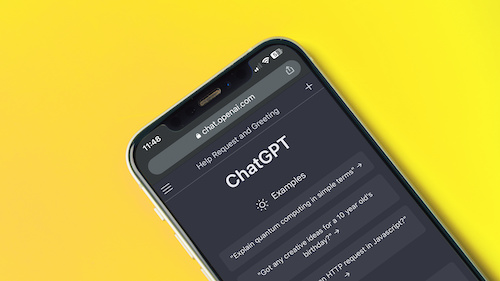Click Here for Everything You Need To Know About AI In Education
Since the public release of ChatGPT took the world by storm last fall, many educators have worried about students using the highly advanced, artificially intelligent chatbot for cheating on school assignments by passing off AI-generated work as their own. But if AI can be used to produce written content, can it also be used to determine whether a piece of writing was created by AI or by a human being?
That’s what Turnitin is hoping to do with a new feature the company has added to its existing writing tools. Beginning April 4, all Turnitin products—including Turnitin Feedback Studio (TFS), TFS with Originality, Turnitin Originality, Turnitin Similarity, SimCheck, Originality Check, and Originality Check+—will include AI detection capabilities for existing users.
Turnitin began working on detection capabilities for GPT3, the underlying technology upon which many AI writing applications are based, nearly two years before the release of ChatGPT.
“Educators told us that being able to accurately detect AI-written text is their first priority right now. They need to be able to detect AI with very high certainty to assess the authenticity of a student’s work,” said Turnitin CEO Chris Caren.
The company says its AI detection is currently 98-percent accurate in lab-based testing. “In the coming months, we will continue to refine and adapt our [AI] detection capabilities using field data to increase accuracy,” said Chief Product Officer Annie Chechitelli.
Turnitin isn’t the only company claiming to offer AI detection capabilities. Shortly after the public release of ChatGPT, Princeton student Edward Tian created an app called GPTZero, which he said can “quickly and efficiently” determine whether a human or ChatGPT composed an essay. Copyleaks is another AI detection tool.
However, a key advantage of Turnitin’s service is that it’s integrated directly into the existing workflows of the company’s digital writing platforms, which are used by nearly 11,000 educational institutions and more than 2.1 million educators worldwide. Turnitin’s AI writing detection capabilities don’t require any additional steps for customers to take advantage of them, the company said.
The first iteration of Turnitin’s AI writing detection service is available to customers as part of their existing licenses so they can test the solution and see how it works. At this point, there is no standalone AI detection product from Turnitin, and the company did not say how long the service might remain free to customers.
Created by OpenAI, a San Francisco-based research laboratory, the free ChatGPT application generates text that appears to have been written by a human in response to a user’s prompts. It reportedly had more than 100 million downloads within a month of its release in November 2022. The latest version, released March 14, can understand images as well as text.
Many school systems—including the Los Angeles Unified School District, New York City Public Schools, and Seattle Public Schools—have blocked ChatGPT on school-issued devices for fear of student cheating.
Others argue that schools shouldn’t ban ChatGPT but should leverage it for instruction. In an op-ed for the New York Times, technology podcaster Kevin Roose wrote that banning ChatGPT isn’t a practical solution, as students have their own phones, laptops, and other ways of accessing it outside of class.
“Tools like ChatGPT aren’t going anywhere; they’re only going to improve,” Roose observed. “Today’s students will graduate into a world full of generative AI programs. They’ll need to know their way around these tools … in order to work alongside them. To be good citizens, they’ll need hands-on experience to understand how this type of AI works, what types of bias it contains, and how it can be misused and weaponized. … Who better to guide students into this strange new world than their teachers?”
Caren said the emergence of ChatGPT and similar technologies raises many questions for the future of education. “But, it is important to recognize that the presence of AI writing capabilities does not signal the end of original thought or expression if educators set the right parameters and expectations for its use,” he noted. In addition to its AI detection capabilities, the company has created a resource page to support educators in teaching during this new era of AI-based writing.
Lisa LaBrake, an English teacher at Sweet Home High School in New York, said she has shown students and her colleagues how to use ChatGPT to generate ideas that can help them get started with their writing. Although she’s concerned about the potential for ChatGPT and similar tools to aid in cheating, she says she’s excited about Turnitin’s new detection capabilities and believes they may encourage academic honesty.
Her advice to other educators about teaching in a world with ChatGPT? “Embrace it, educate yourself, and blend it into your lessons. Use this AI software as a supplement or complement to your teaching. Develop good relationships with students, so you can figure out their writing style immediately. And have conversations about academic integrity and school honor codes.”
Related:
ChatGPT can generate, but can it create?
- Can technology help schools prevent AI-based cheating? - April 14, 2023
- How to ensure digital equity in online testing - July 6, 2022
- ‘Digital skills gap’ threatens innovation - May 30, 2022

